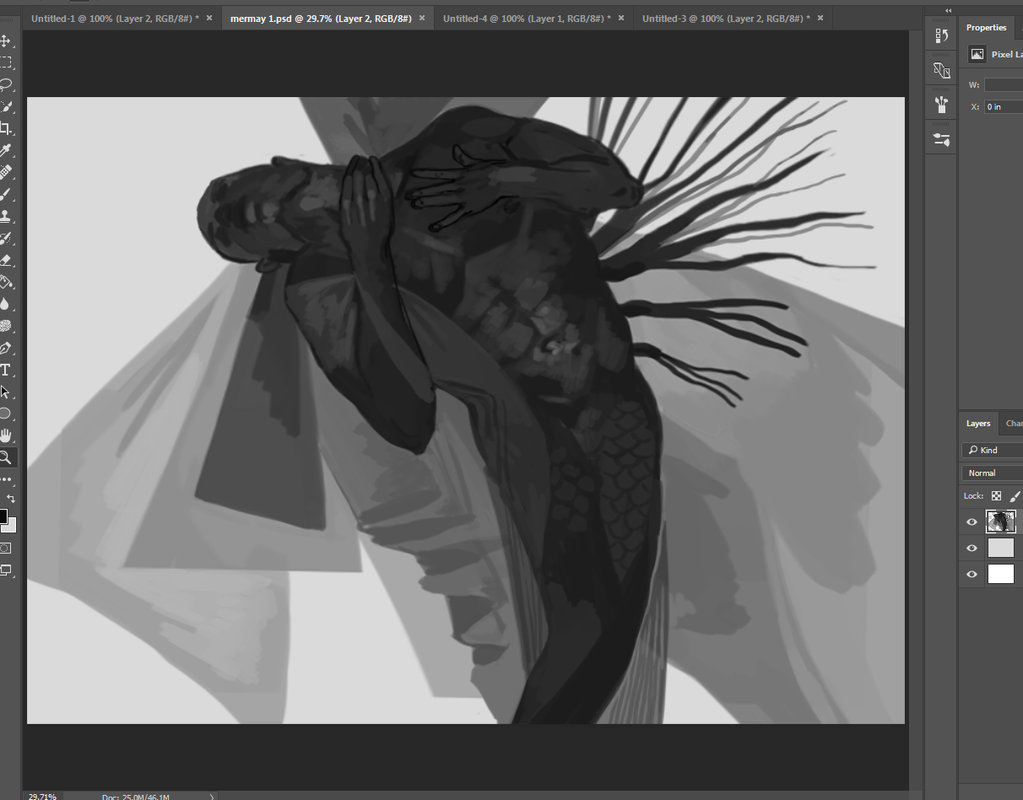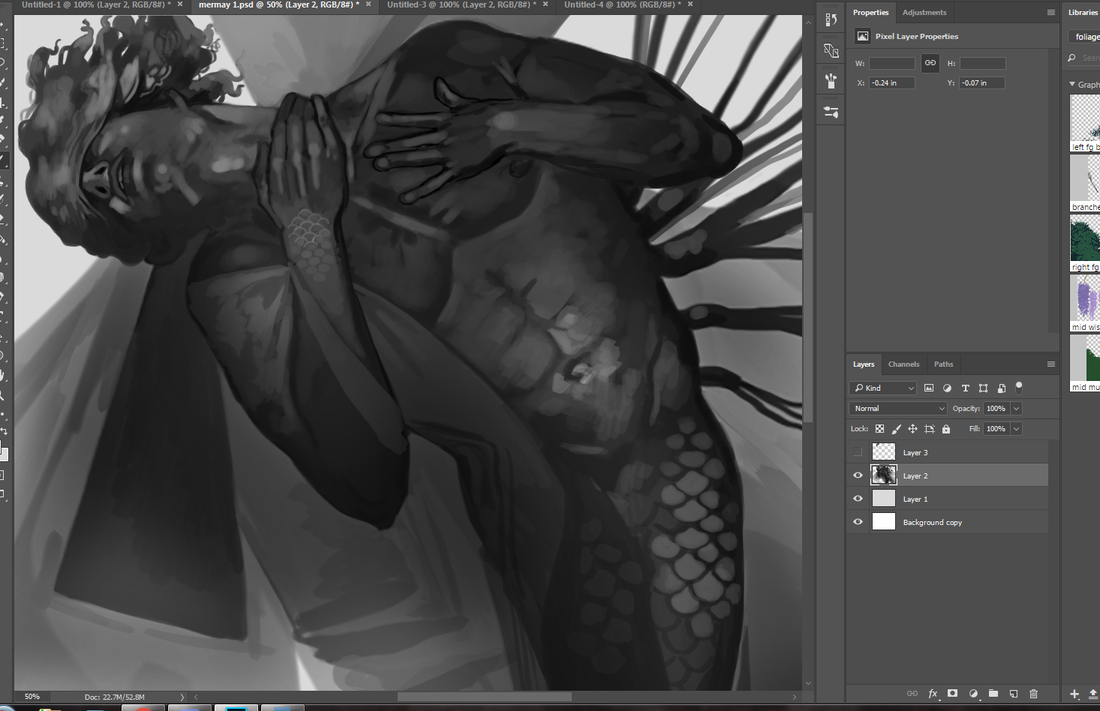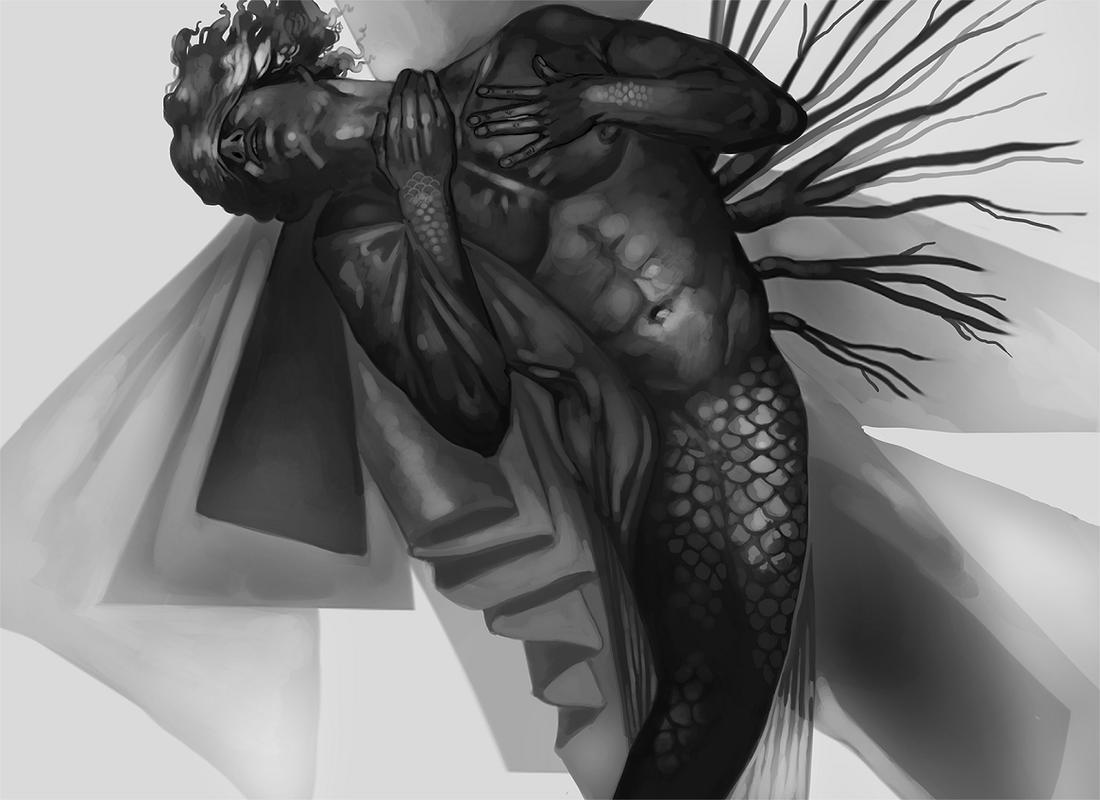|
Some of my favorite pieces come from just throwing down random shapes and making it work. This is yet another one of those pieces. (and if you're curious about more posts like these, check out these studies I did of John Boyega's British GQ photoshoot) This painting originally started out as a bunch of angular, blocky shapes because I just needed to paint something. I was stressed out and really not liking the fact I had barely any new work to post. Then I painted a merman over the random clutter and realized it'd make a great contribution to the #Mermay sketch event over on Twitter. I looked up a few references for the angle of the face (even the most spontaneous of art still looks better with a little help) and used my own hands for reference: Not only did I study how my hands looked in the mirror, I took a minute to just feel along my neck. Figure out how each piece falls into place. The way the first and second knuckles curve over the throat, where the light would most likely hit first. It's about understanding something, not just copying and hoping you get a B on the test. There's a lot of unnecessary shame that comes with using references for art, both for beginners and experienced artists who 'should be beyond references by now'. Unless you've got a photographic memory, it simply isn't realistic to think you can spurt out complete accuracy 100% of the time. Whether or not you even want complete accuracy is a whole 'nother can of worms, at that. Whether you're someone who leans toward painterly realism, like myself, or prefer a cartoony style, references are always going to be part of the game. It's how you use them -- and what you take away once you're done -- that you should be concerned about. I use references because I'm not a dot matrix printer. Chances are, neither are you! I especially go into references with the goal of understanding how something works, so I don't have to rely on them quite so much. It's the difference between needing references 100% of the time or 40% of the time. A little quicker, right? It goes even deeper than that, though. Even the way you paint or draw a subject...it's obvious when an artist is just copying something down without further scrutiny. Likewise, it's obvious when they really get why something works the way it works. Why the cloth folds that way due to gravity and material. Why light scatters through skin to leave a certain glow. It's a subtle touch I want bursting out of my portfolio. I thought about coloring this (indeed, I did a few experimental overlays), but it just looked better grayscale. Winging it to the very end. Thumbnailing and drafting is important, especially as a working professional, but other times it just gets in the way of doing the work. When in doubt? Throw up abstract shapes and turn it into a dream. now I gotta push myself to keep more progress shots of these spontaneous pieces, since by the time I remember I want to record my process the illustration's 90% done Got more progress posts coming up, including one piece that's a few years old and a fanart I did last year. Stay tuned!
0 Comments
Your comment will be posted after it is approved.
Leave a Reply. |
AuthorHere I post WIPs, sketches, speedpaints, thumbnails and anything else thrown into the veritable stew of artistic process. Archives
January 2021
Categories
All
|
ServicesBook Covers
Illustration Character Art Portraits Packaging Art Concept Art |
AboutCommercial illustrator and designer currently available for short-term and long-term freelance work.
|
© COPYRIGHT 2015. ALL RIGHTS RESERVED.
|



 RSS Feed
RSS Feed